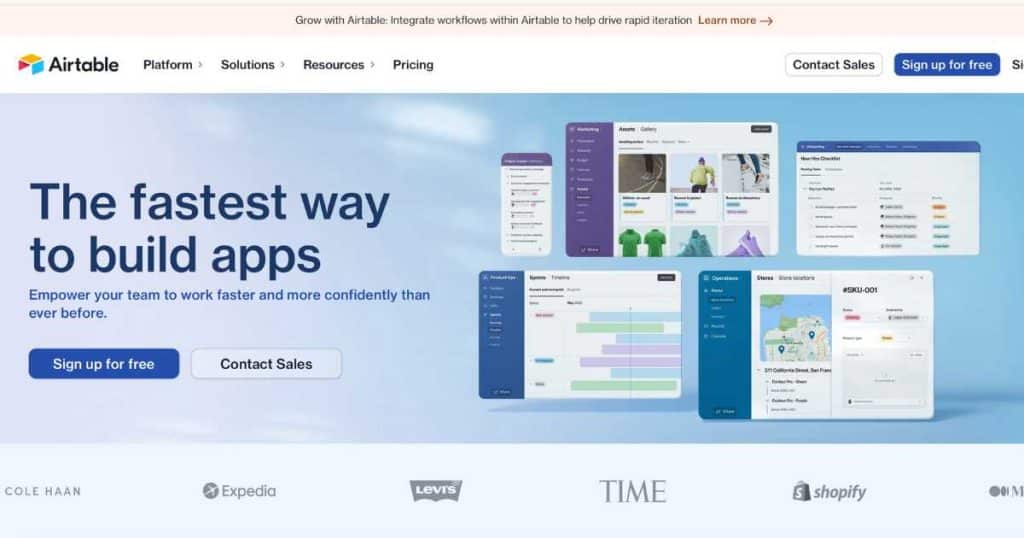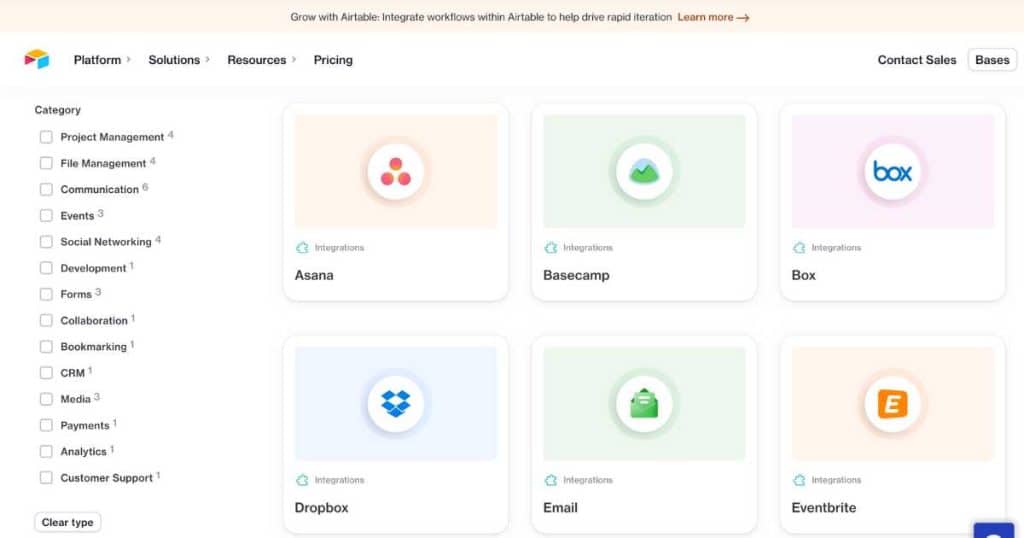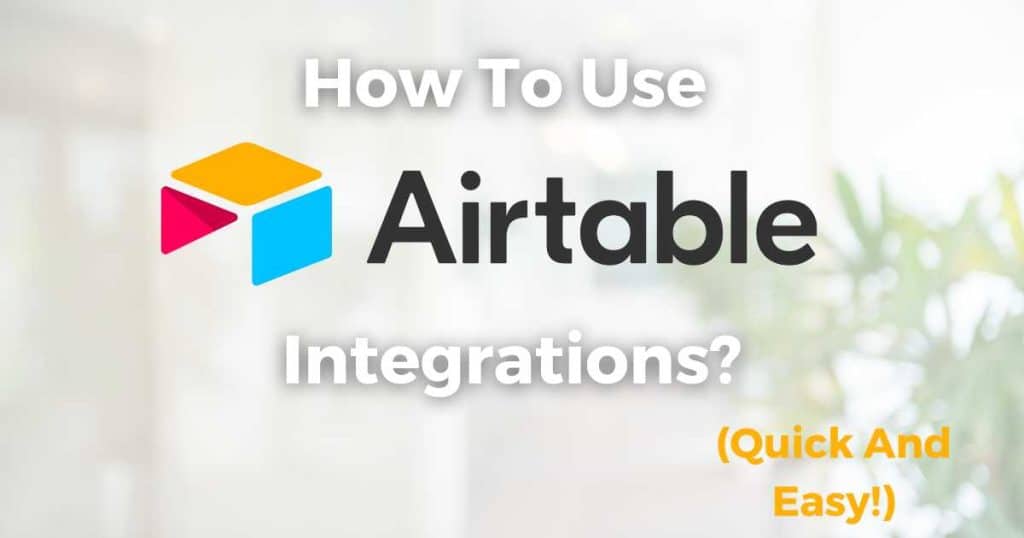Want to know how to get started with Airtable Integrations?
Okay, so you’ve chosen Airtable to streamline your workflows, data, and projects.
But now you’re wondering, how can I integrate Airtable with the rest of my tech stack?
Well, don’t worry, I’m here to help!
Read more: Top 7 Free Project Management Software.
Get Started With Airtable Integrations

If you’re finding that you and your team are scattered across different platforms, I have good news for you!
Airtable creates a unified hub combining the ease of a spreadsheet and the power of a database to track and manage all aspects of your work.
From calendar apps, communication tools, task managers, social media, and everything in between, wave goodbye to scattered information and welcome Airtable integrations with open arms!
Integrations are so important for streamlining business processes, automating tasks, and enhancing overall productivity.
But does Airtable connect with the software you already use? And how can you get started with Airtable Integrations?
Let’s jump in and find out.
Read more: Airtable vs Notion
What Are Airtable Integrations?

I’ll be honest: Airtable’s integrations are sub-par compared to other online tools.
Airtables’ 30-ish integrations don’t stand a chance against the hundreds of integrations offered by other online project management tools such as Monday.com, Asana, or Trello.
However, their list of internal integrations includes some pretty big names.
Simply integrate your Airtable tables with project management tools like Trello, Asana, Basecamp, and Jira, or sync your Evernote, Dropbox, or Google Drive account to share files.
In terms of staying up to date with your team, Airtable can easily connect to your Slack workspace, Gmail email account, or Twilio.
You can link your Google or Outlook Calendar, Facebook, Instagram, or LinkedIn business profile or create captivating forms using Jotform or Typeform.
It is disappointing that, in terms of CRMs, you can only connect with SalesForce.
However, integrations with the payment processing app Stripe, CMS platform WordPress, YouTube, and customer service typhoon Zendesk are super handy.
So, all in all, although limited, there’s a good range of software mixed in there to help you enhance the functionality of Airtable.
Plus, you can connect your account with Zapier, allowing you to connect with thousands more applications and software!
Read more: Airtable vs Monday.com.
How To Use Airtable Integrations?

All the above integrations are super simple to install onto your Airtable tables. All you need to do is:
- Click your profile in the upper right-hand corner of your dashboard.
- Select ‘Integrations’ from the drop-down list.
- Here, you will find a list of integrations available for your Airtable account.
- Choose the integration that you want to install.
- Click the ‘Install’ or ‘Connect’ button to start the installation.
- Depending on the integration, you may be redirected to another website or platform to complete the installation.
- Follow the prompts and provide any necessary permissions or authorizations to grant access to your Airtable account.
- Once the installation is complete, the integration will be connected to your Airtable account!
Connecting your Airtable account through one of the applications within the third-party automation tool Zapier is a little more complicated. Head over to Zapier to learn more.
Read more: How To Export Airtable To Excel.
My Final Thoughts
Airtable is an awesome, flexible spreadsheet and online relational database that can make your data actionable.
There are so many things to love about Airtable, including its syncing and centralized data capabilities, seamless collaborations with multiple use cases, and more.
Airtable is so diverse – which is why so many people love it!
However! Airtable is not the most generous tool out there when it comes to integrations.
But does it really matter? Airtable has everything you need to manage your tasks, projects, data, and more.
Plus, most of the tools I use are available within Airtable! Let me know what you think below.
Are you happy with Airtable’s integrations? Or is it missing something from your tech stack?

